Advocacy Marketing: How to Do It Effectively (+ Examples)
Matthew Turner
Updated by Tara Malone
Advocacy marketing is one of the simplest forms of marketing.
It also happens to be one of the harder strategies to get right.
It involves getting your existing customers to talk about their positive experiences with you to other people, which generates excitement about your brand and brings you more traffic and leads.
Yet achieving this is easier said than done. After all, you’re doing business in a competitive and noisy world. No matter what industry you’re in, the cost of finding and acquiring new customers quickly adds up.
It’s not enough to have a great product and service these days.
You have to stand out for the right reasons and build your customers’ trust.
Advocacy marketing helps you build this trust. Yet you need this trust to run successful advocacy marketing strategies.
The good news is, none of this process has to be hard. In this article, we’ll show you how to implement successful advocacy marketing strategies and share some of our favorite advocacy marketing examples.
Key Principles of Advocacy Marketing
A great advocacy marketing strategy doesn’t just happen.
Very few businesses “luck” into this.
Instead, it’s an intentional process.
The advocacy marketing strategy you build for your customers is unique to you. Yet no matter which one you create, it should involve the following elements.
This begins with the most important one of all…
1. Have The Big Picture in Mind
What’s the purpose of your advocacy marketing plan?
- Do you want to create long-term relationships with your brand advocates?
- Do you want to create short-term buzz around a launch?
There has to be a purpose for what you create. It needs to have your customers at the heart of it, yet it also needs to fulfill your own ambitions.
Take Dropbox, for instance…
Their plan was to create an ongoing buzz while they grew their business. Much of their revenue today comes from “enterprise-level accounts”. So the long-term relationship with their early brand advocates wasn’t as important.
Their aim was to reach as many people as possible, knowing individual users would fuel growth.
So although you’ll likely want to build long-term trust with your customers, it may not be the sole aim. This is fine, so long as you’re clear on what your big picture is.
Once you know this, you can align it with your customers and what they need.
Again, this doesn’t just happen. You need to intentionally get clear on what this is.
If you haven’t created a customer profile, this is the stage to do so. No matter what you build, it only works if you serve your customers above and beyond.
Figure out what this is and you’ll set yourself up for long-term success.
2. Sell an Amazing Product
No amount of good marketing can fix a bad product.
You simply cannot build a tribe of brand advocates if you don’t deliver an amazing product and/or service. You face too much competition. If you don’t deliver value, someone else will.
So if your product isn’t great yet, take a step back and fix it. The last thing you want to do is implement an advocacy marketing strategy that builds the wrong kind of buzz. You often only get one shot at this.
Make it count.
Dropbox did. They didn’t promise their users what they couldn’t deliver. They kept it simple (for each person you refer, get a 500 MB of free storage). And they followed through by giving it to them.
It just worked.
So did their product!
At this stage, many people remained unsure about cloud computing. They worried about privacy and what might happen to their data. They were scared they may lose their files, videos, and images.
Dropbox removed this fear by providing a service that worked.
If you don’t offer this to your brand advocates, no advocacy marketing strategy will work. In fact, you may do more damage than if you did nothing in the first place.
3. Offer a Memorable Customer Experience
In their book ‘The Power of Moments’, Dan and Chip Heath talk about the importance of delivering WOW Moments: moments that stand out for the right reasons and give people the unexpected.
In advocacy marketing, moments like these matter.
You need to deliver a memorable customer experience that sets you apart for the right reasons. Your customers enter into a relationship with you expecting certain things. If you only deliver on these, you will not stand out.
You have to go beyond such moments.
You have to venture into the unexpected.
For Dropbox, their promise of free storage played a large role in this. They continued it moving forward. You didn’t just get 500 MB of free storage for the first, second, or third person you referred.
The more people you sent their way, the more free storage they gave you (up to 16GB).
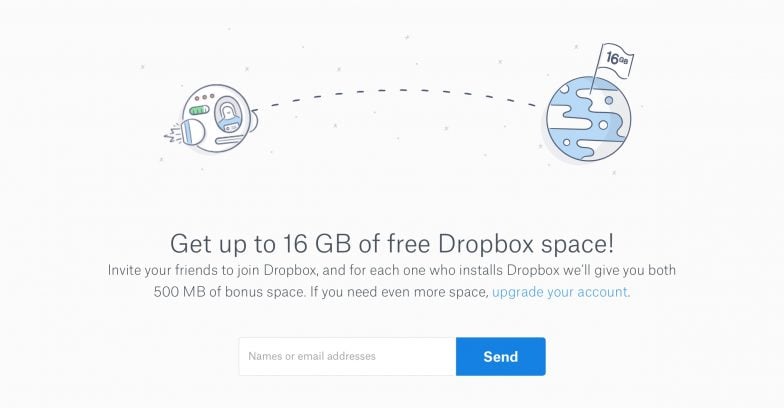
We always expect a “catch”.
It’s a good deal now, but at some point, they’ll take it away.
Dropbox didn’t. They kept their promise and they continued to deliver on it.
It’s a simple one. Yet a powerful WOW Moment nevertheless.
You too need to think about these WOW Moments:
- What journey will you take your customers on?
- What experience can your brand advocates expect?
The whole point of your advocacy marketing strategy is for your customers to promote you to others. They will not (and cannot) do this if you provide a complicated, boring, and forgettable experience.
4. Provide Exceptional Customer Service
If there’s one thing you can guarantee, it’s that something will go wrong at some point.
Your advocacy marketing plan will not always go according to plan. Not all your brand advocates will have the same customer experience as everyone else.
How will you deal with this?
- How will you handle complaints?
- What will you do when your customers need your help?
- What happens if an important tool stops working?
- Or if your product and/or service breaks?
It all comes back to expectation.
Your brand advocates expect a certain level of service. Through the good times and bad, you must deliver on this.
You’re still building their trust. The service you provide plays such an important role.
If you already have their trust and loyalty, one bad experience isn’t catastrophic. Yet when you’re still creating this trust, it can end the entire relationship!
At all times, you must provide exceptional customer service. Be human. Be transparent. Don’t automate the entire process too soon. Your brand advocates will need you on occasion. Be there for them!
5. Consistently Seek Out New Brand Advocates
The reason Dropbox’s advocacy marketing campaign worked so well is that they didn’t stop with their first batch of brand advocates.
They could have opened it up for the first ten thousand users.
Yet they didn’t. For a long time, they continued to seek new brand advocates. The people you referred got the same promise and benefits you did. When they referred new people, these new users got the same promise and benefits.
It continued to grow and grow until Dropbox had achieved what they had set out to.
If they stopped at the first ten thousand users, it’s safe to say they wouldn’t be worth billions today.
So don’t think small when creating your own advocacy marketing strategies. Where possible, set it up to scale so it can keep on growing and growing.
You may need to draw a line in the sand at some stage. But don’t do this too soon. As Neil Patel says: your customers are your most influential form of marketing.
The more you have, the easier your marketing efforts become.
One hundred brand advocates are good. One thousand is better.
Keep this in mind when building your own advocacy marketing strategies.
Where possible, continue to seek new brand advocates for as long as you can.
6. Have Fun and Be Imaginative
Above all, have fun when creating your advocacy marketing strategies.
- Involve your team.
- Reward them as well as your customers.
- Get creative and encourage creativity in other people.
- Build your company culture around your big promise.
So much of your marketing centers around numbers and data. Although some people find statistics like this fun, most people do not. Though advocacy marketing, you can have immense fun. Your team can. Your customers can. It can become a huge driving force for PR, content, and future investments.
Think outside the box.
Be imaginative and do the unexpected.
There are many advocacy marketing examples that prove how creative you can get.
This is where we’ll turn our attention next.
Because now that you know what to do, it’s time to inspire you to take action.
8 Winning Advocacy Marketing Examples
It’s very possible for you to create something amazing with your advocacy marketing campaign.
We’ll show you how possible this is by sharing 8 advocacy marketing examples.
We’ve already introduced you to one: Dropbox.
Let’s share a few more, starting with one of the world’s biggest companies…
APPLE
In 2015, Apple launched the ‘Shot on iPhone’ campaign. Straightforward by design, Apple crowdsourced photos shot with the iPhone by normal people around the world. After combing through social media, they gathered 77 images from people in 24 countries and displayed each one on billboards across the globe.

There are a few reasons why we love this:
- It’s cost-effective, despite Apple having a near limitless budget.
- It has real customers using their product.
- Apple invited its already loyal users to be a literal part of their latest marketing campaign.
Not only did they use 77 images for the campaign, but the hashtag used to crowdsource these images reached millions of people.
It’s one of the best advocacy marketing examples on this list due to its simplicity.
It also shows that an advocacy marketing strategy does not have to cost a lot.
STARBUCKS
In October 2013, Starbucks launched a new advocacy marketing campaign, Tweet-A-Coffee.
The premise was simple: send your friend a $5 Starbucks Gift Card Tweeting the @tweetacoffee handle alongside the recipient’s own handle.
In addition to this, Starbucks promised the first 100,000 people who joined the campaign a $5 gift card of their own. It didn’t take long for momentum to build with more than 27,000 customers joining the program.
(With 34% of people purchasing multiple gift cards.)
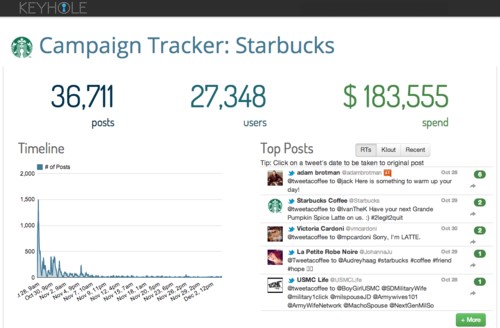
What we love about this advocacy marketing example is the way it engages two different users at the same time. Starbucks acts as the bridge between one friend to another. Their only role is to connect the dots and serve the drinks (and generate $180,000 of sales in the process).
Similar to Dropbox, it’s a simple strategy that creates value for multiple people.
TESLA
When it comes to advocacy marketing, Elon Musk is a master of the craft.
In 2015, he promised existing Tesla owners $1,000 if they referred a new Tesla owner.
(Who would also receive a $1,000 off their new car.)
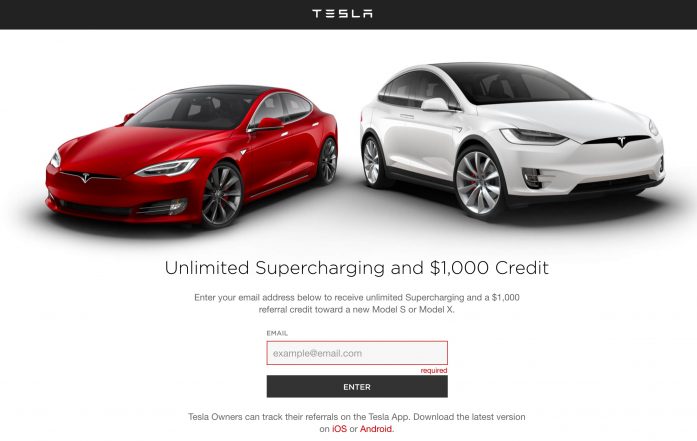
Taking this further, Musk promised the first person to refer ten new Tesla customers a free Model X SUV. This added a sense of competition to the referral program, motivating their early adapters to become a Tesla salesperson.
It’s a great example of advocacy marketing because it gives the customer what they want: 1) money off their next car, and 2) a chance to get a new car that nobody else can.
These were early adopters of Tesla, remember.
The chance to own something “new” is a huge motivator.
UBER
One of the main reasons Uber has grown into the force it is today is because of its Referral Program.
Rewarding both drivers and riders, Uber has always offered its double-sided incentive for referring new people. This means you, as the referrer, get more off your next ride, as well as the person you’re referring.
The same applies for drivers who refer new drivers.
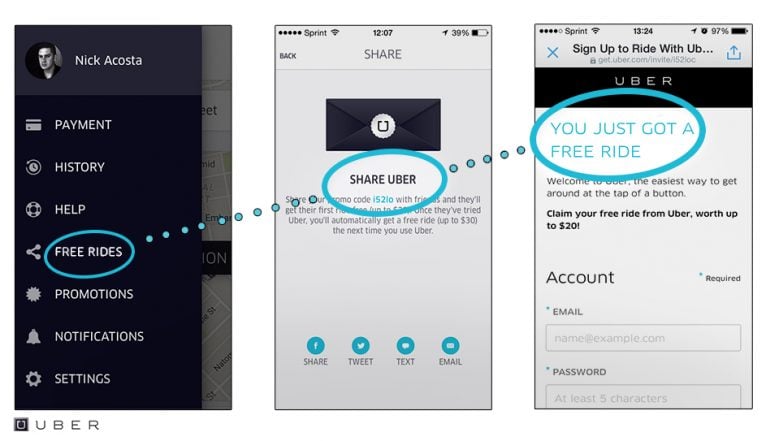
It’s one of the simplest forms of advocacy marketing. Yet the reason Uber’s so successful with it comes down to how easy they make it for everyone. It all takes place inside the app. It’s seamless.
There’s a lesson here for you as you build your own advocacy marketing strategies: remove friction.
Make it easy for everyone involved.
Make it so easy that it’s harder to not do it.
SOUTHWEST AIRLINES
This one is different from the other examples we’ve shared so far.
Until now, we’ve shared referral programs and advocacy marketing campaigns.
They have a start and end date, or a set of rules the customer must follow.
Southwest Airlines goes against the grain in this regard, making advocacy marketing a huge part of their culture. From fun and witty napkins to a flight attendant that raps, Southwest Airlines does all it can to engage customers.
It seems to work, too. A 2018 survey found that Southwest Airlines delivers the best customer experience in the airline industry.
It’s one of our favorite advocacy marketing examples on this list because it’s less about marketing and more about culture. It’s a way of life at Southwest Airlines. Their customers benefit from this, as do their employees. It’s fun, and leaves a lasting impression on most people involved.
NAKED WINES
Naked Wines goes above and beyond to reward their most loyal customers. They don’t have a referral program or card, rather a unique community (a movement, even): the Archangels.
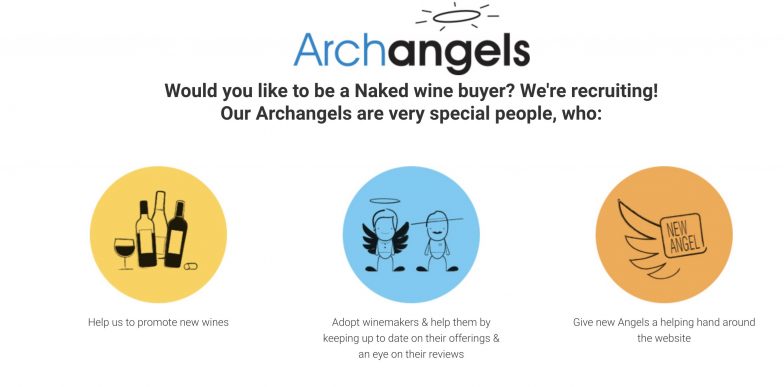
Naked Wines have fun with their customers, inviting them into a special club of their most valued people. From samples of new wines to special invite-only events, Archangels get access to some great rewards.
It’s a fantastic example of advocacy marketing because it creates a sense of belonging.
We’re a social species. We flock toward those similar to ourselves.
Naked Wines understands this, creating a private community for their MVPs.
What’s great about this is, you can replicate it for almost any business or industry.
If you build a community that your customers love, everything else will fall into place.
SHOPIFY
Another advocacy marketing example that goes beyond a referral program comes from Shopify.
Although their blog may seem like any other, they approach their content differently than most.
For starters, they create user-centric content designed to help them. It’s less about SEO and creating new leads…instead, it’s written for their existing customers.
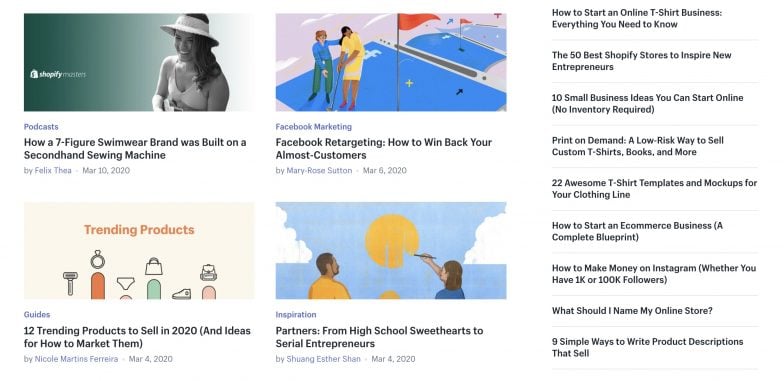
In doing so, they often write articles that include their members. They share their stories, successes, and lessons from failure.
It’s a subtle form of advocacy marketing that you should not overlook.
Not only is it cheap for you, but one of the best ways to build trust with them.
Where most businesses write content to acquire new leads, maybe you could create it to help build a loyal army of brand advocates.
CLICKFUNNELS
This final advocacy marketing example proves how powerful it can be when you build a movement.
Through Clickfunnels, Russel Bruson has built a tribe of ‘Funnel Hackers’ that:
- Attend events
- Refer new customers
- Write about the product
- Use their product for client work
Chances are you know someone who LOVES Clickfunnels and encourages you to use it. People have built entire businesses around the software.
These days, it’s less like a product and more like a movement or a philosophy.
This is the power of advocacy marketing.
Approach it right and you can build something huge.
Ready to Create a Winning Advocacy Marketing Strategy?
You’re doing business in a noisy and competitive world. Each day, you wake up with new competitors offering the same product and service you do.
Yet the opportunity to reach those you need to is better than ever before!
You can use the level of competition these days to your advantage. Because the reality is, many of your competitors will not do anything we’ve talked about in this article.
That’s why advocacy marketing is an amazing opportunity for you to get a head start and build a loyal following of customers. Not only does this increase sales, but it also drives down costs as they do the selling for you.
Having read this article, you know what you need to do.
You know the process. You have great examples to work from.
Above all, you know the benefits that await you if you choose to follow through!
To help get you started, check out our Free Report that dives into 3 awesome engagement strategies you can use right now. Download Your Free Report Now and set yourself apart from those around you.
